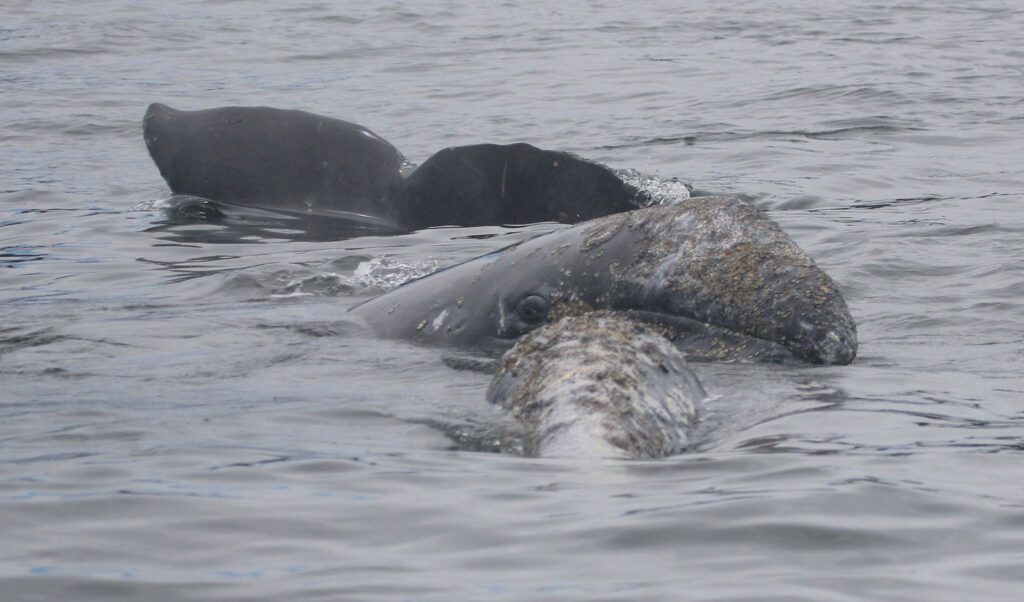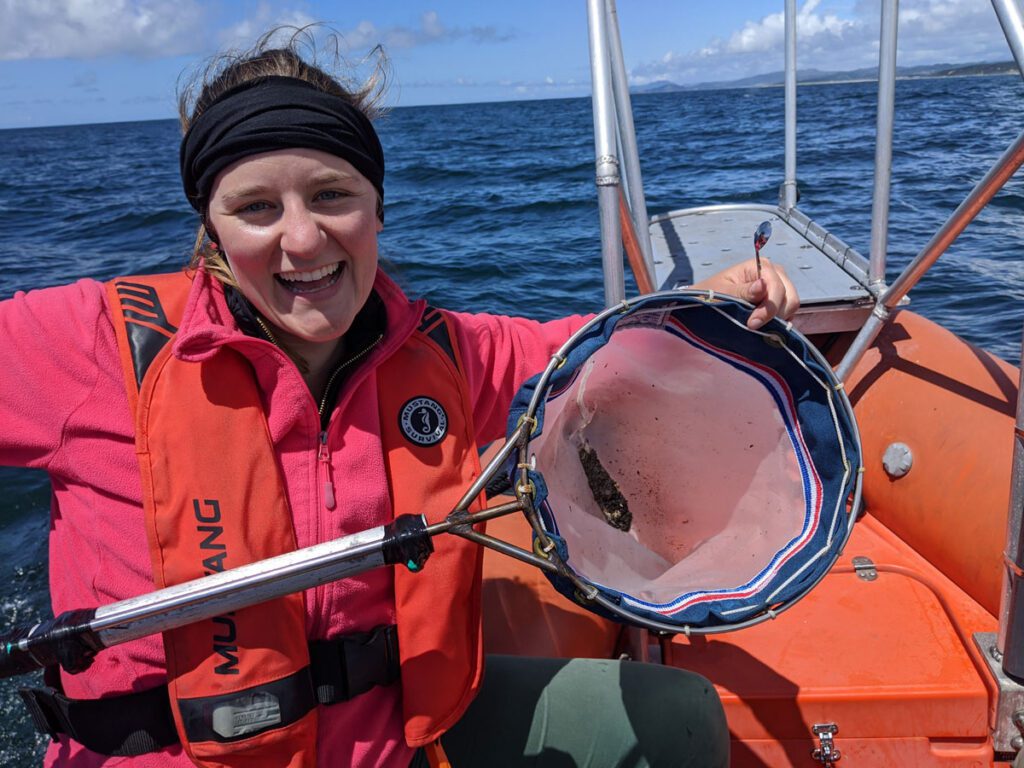Reproduction
While the primary reason gray whales use Oregon coastal waters during the May to November period is to feed – and feed a lot! – they also engage in important social behaviors, like raising calves and preparing for reproduction.
The Pacific Coast Feeding Group (PCFG) gray whales that we study in Oregon have high maternal recruitment, which means that moms bring their calves to the same feeding grounds and teach them and survive here, so that when the calves are independent and grow up, they use these same feeding behaviors and same habitats. We have seen this pattern with many mom-calf pairs, including Scarlett and Pacman, and Clouds and Cheetah.

This maternal recruitment is what makes the PCFG feeding area special, as only a small group of gray whales in the Pacific Ocean feed here (maybe the rest don’t know about it, or they don’t know how to feed here). So, tracking pregnancies, calving rates, and reproduction by these PCFG gray whale is important.
Just like women, whales get wider when they are pregnant. Using aerial images captured from drones, we can measure the width of a gray whale at 50% of their length to determine if she is pregnant while on their feeding grounds. This measurement is an easy and effective tool for us to better understand rates of pregnancy and calf survival among our Oregon gray whales.
By collecting and analyzing poop samples from gray whales, we found that mature male gray whales have increased testosterone levels towards the end of the foraging season (September and October). Juvenile males did not show this same increase in testosterone, the male reproductive hormone, because they are not mature enough to engage in breeding activities. These results indicate that mature male gray whales prepare for reproduction while in Oregon waters before they begin their southbound migration.

Altogether, these findings highlight the importance of Oregon waters for gray whales – not only as a critical feeding area, but also to raise calves and begin reproduction.
Want to read more? Check out these resources:
Fernandez Ajó A, Pirotta E, Bierlich KC, Hildebrand L, Bird CN, Hunt KE, Buck CL, New L, Dillon D, Torres LG (2023) Assessment of a non-invasive approach to pregnancy diagnosis in gray whales through drone-based photogrammetry and faecal hormone analysis. Royal Society Open Science 10:230452 doi:10.1098/rsos.230452. https://royalsocietypublishing.org/doi/abs/10.1098/rsos.230452
Blogs:
A non-invasive approach to pregnancy diagnosis in Gray whales is possible! https://blogs.oregonstate.edu/gemmlab/2023/11/13/a-non-invasive-approach-to-pregnancy-diagnosis-in-gray-whales-is-possible/
When do male whales get randy? Exploring the seasonal testosterone patters in the PCFG gray whale
https://blogs.oregonstate.edu/gemmlab/2024/01/16/when-do-male-whales-get-randy-exploring-the-seasonal-testosterone-patters-in-the-pcfg-gray-whale/
